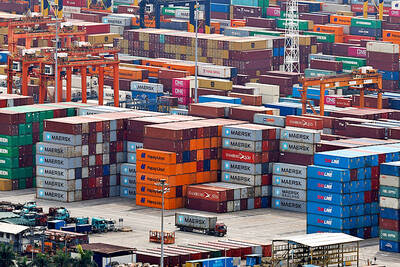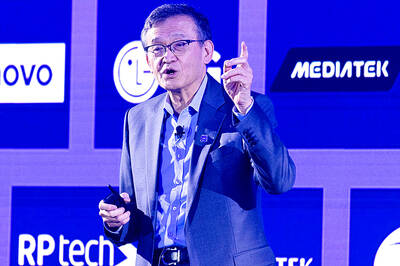In a sprawling greenhouse with shiny silver ducts running through, stacks of cardboard boxes feature prints of a flower alongside the distinctive red Toyota logo.
In an experiment aimed at putting to use some of the carbon dioxide blamed for global warming, the giant auto group is using Asia’s largest greenhouse for potted flowers, stretching across 20,000m².
“Nowadays you automatically think of C0² as a villain. But it’s what plants need to grow,” said Teruo Takatomi of Toyota Floritech Co Ltd.
The system generates power by burning natural gas, with electricity used for lighting over plants, “waste” heat for warming water, and emitted carbon dioxide falling on plants to promote their photosynthesis.
“You have gas emissions when you generate electricity. After removing nitrogen oxide from the gas, C0² is returned here for plants to inhale,” farm chief Takuya Sato said.
The new system, introduced in March, is expected to help the company slash C0² emissions by a combined 460 tonnes a year, he said.
The farm is the first large commercial facility in Japan to introduce a form of “trigeneration” system — production and use of three different resources from a single fuel, according to project partner Kansai Electric Power Co.
The system comes along with a machine that provides high-oxygen water to help invigorate plant roots.
“The point of the system is — let’s generate power and use the byproduct too, leaving almost nothing wasted,” said Hiroshi Teshima, of Kansai Electric.
“People who grow plants say that C0² during winter is as effective as sunlight,” he said.
Kansai Electric, Toyota Floritech and other firms spent ¥70 million (US$650,000) to install the system at the greenhouse on Japan’s main island of Honshu, which is a few minutes drive from a major nuclear fuel plant.
Another ¥120 million was spent to switch the energy source from heavy oil to natural gas by building a satellite tower to store liquefied natural gas.
“Agriculture of course absorbs C0² thanks to photosynthesis but we hope this system will help cut the gas further,” said Masao Ikoma, managing director at Kansai Electric.
Toyota Floritech is a 50-50 joint venture between Toyota Motor Corp and Hakusan Co Ltd, a Japanese firm dealing with seeds and seedling.
The basic design of the automated farm came from Denmark. It employs only eight full-time, non-clerical employees who work in the greenhouse with support of 30 to 40 part-timers.
Toyota Motor, reputed for its production efficiency, has helped the subsidiary but its expertise does not always apply to agriculture, the farm chief said.
“We have received useful tips. For example, these lines,” Sato said, referring to white and yellow lines drawn on the floor showing what areas are for humans and for machines.
He also said the auto giant had taught the farm to tidy things up in clearly labeled boxes to keep the manufacturing floor clean.
“But we are handling living things. Life is very different from machines and components,” Sato said.
“Supposing you are assembling a car, you wouldn’t miss the schedule even by one day. But it’s totally impossible to keep plants production precisely on time,” he said.

The Eurovision Song Contest has seen a surge in punter interest at the bookmakers, becoming a major betting event, experts said ahead of last night’s giant glamfest in Basel. “Eurovision has quietly become one of the biggest betting events of the year,” said Tomi Huttunen, senior manager of the Online Computer Finland (OCS) betting and casino platform. Betting sites have long been used to gauge which way voters might be leaning ahead of the world’s biggest televised live music event. However, bookmakers highlight a huge increase in engagement in recent years — and this year in particular. “We’ve already passed 2023’s total activity and

Nvidia Corp CEO Jensen Huang (黃仁勳) today announced that his company has selected "Beitou Shilin" in Taipei for its new Taiwan office, called Nvidia Constellation, putting an end to months of speculation. Industry sources have said that the tech giant has been eyeing the Beitou Shilin Science Park as the site of its new overseas headquarters, and speculated that the new headquarters would be built on two plots of land designated as "T17" and "T18," which span 3.89 hectares in the park. "I think it's time for us to reveal one of the largest products we've ever built," Huang said near the

China yesterday announced anti-dumping duties as high as 74.9 percent on imports of polyoxymethylene (POM) copolymers, a type of engineering plastic, from Taiwan, the US, the EU and Japan. The Chinese Ministry of Commerce’s findings conclude a probe launched in May last year, shortly after the US sharply increased tariffs on Chinese electric vehicles, computer chips and other imports. POM copolymers can partially replace metals such as copper and zinc, and have various applications, including in auto parts, electronics and medical equipment, the Chinese ministry has said. In January, it said initial investigations had determined that dumping was taking place, and implemented preliminary

Intel Corp yesterday reinforced its determination to strengthen its partnerships with Taiwan’s ecosystem partners including original-electronic-manufacturing (OEM) companies such as Hon Hai Precision Industry Co (鴻海精密) and chipmaker United Microelectronics Corp (UMC, 聯電). “Tonight marks a new beginning. We renew our new partnership with Taiwan ecosystem,” Intel new chief executive officer Tan Lip-bu (陳立武) said at a dinner with representatives from the company’s local partners, celebrating the 40th anniversary of the US chip giant’s presence in Taiwan. Tan took the reins at Intel six weeks ago aiming to reform the chipmaker and revive its past glory. This is the first time Tan